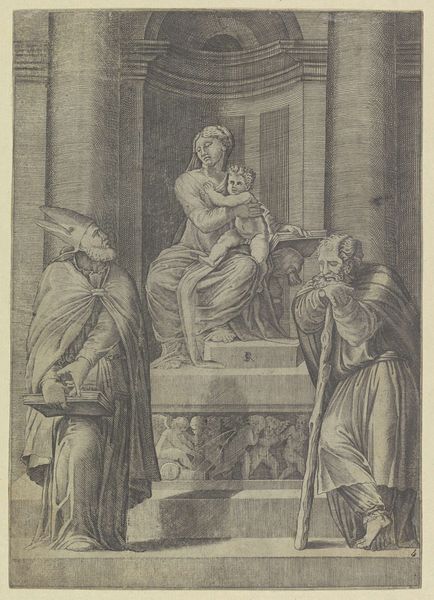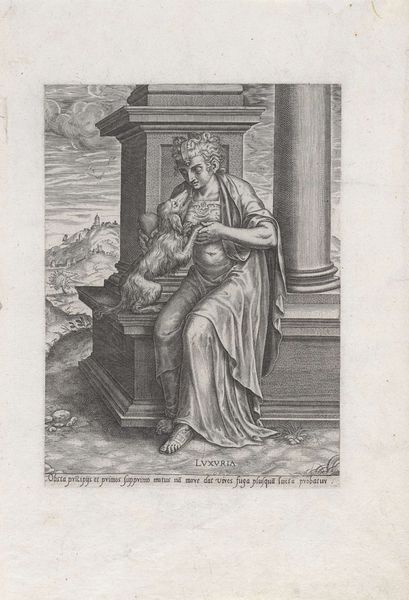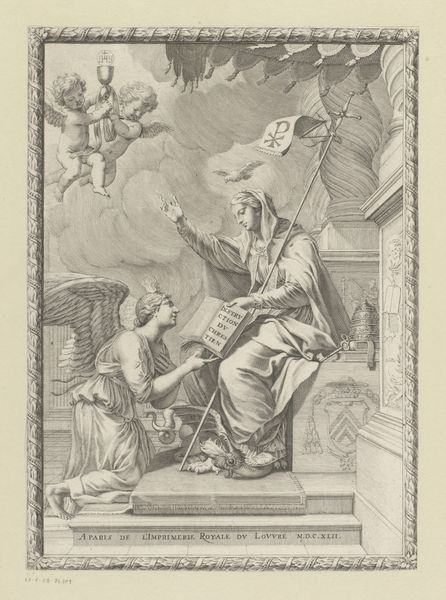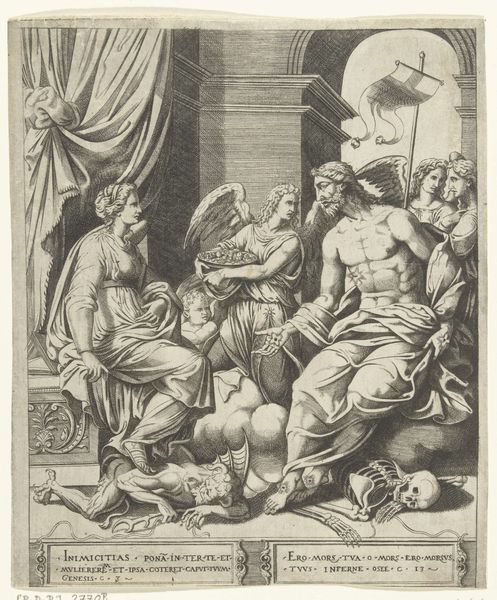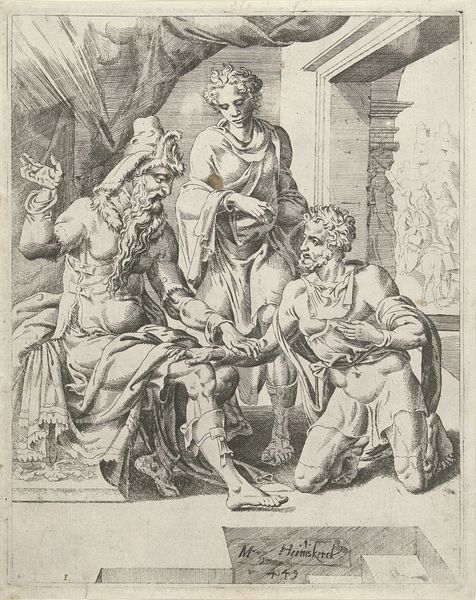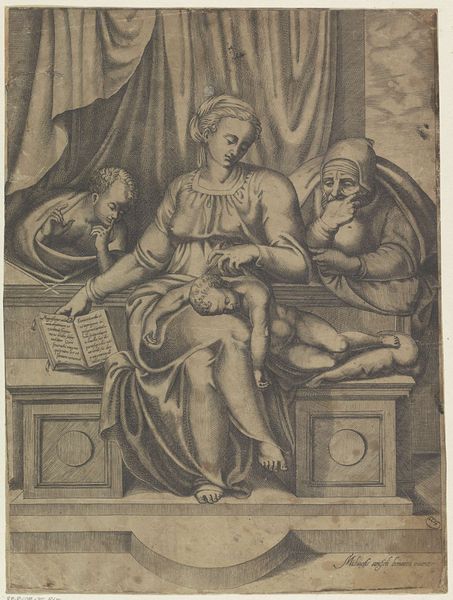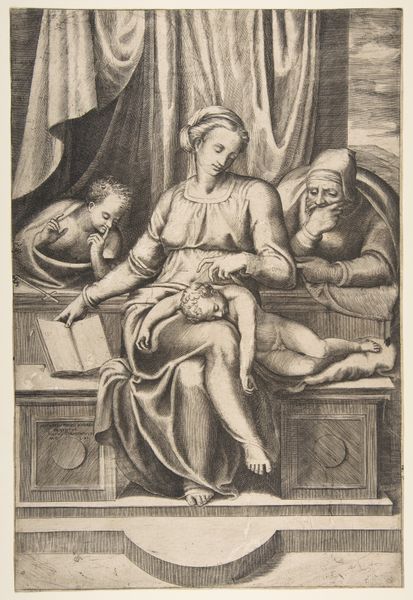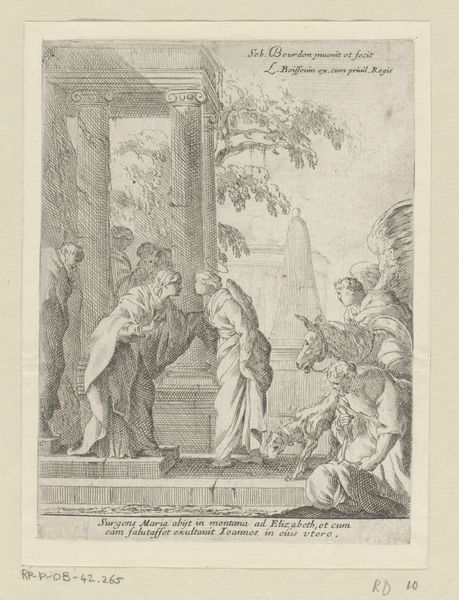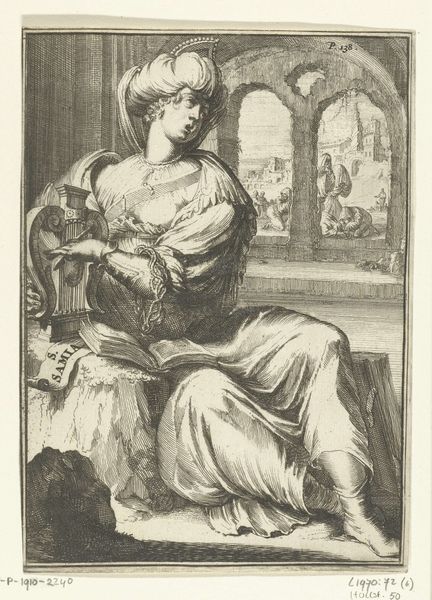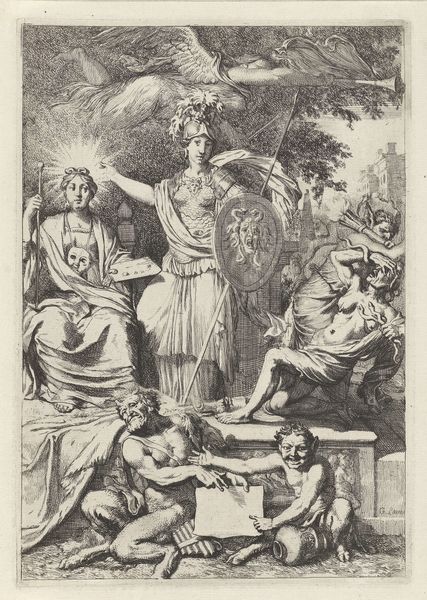
print, engraving
#
allegory
# print
#
old engraving style
#
caricature
#
mannerism
#
figuration
#
line
#
history-painting
#
engraving
Dimensions: height 173 mm, width 137 mm
Copyright: Rijks Museum: Open Domain
Curator: This engraving, dating from about 1537 to 1555, is titled "Jupiter and Semele" and is attributed to Cornelis Bos. What do you make of its visual language? Editor: There’s a stillness that belies the charged narrative—Semele seated almost stoically as Jupiter hovers in the background with thunderbolts. The line work itself creates this curious tension; the controlled etching versus the volatile scene suggests restraint imposed on divine power. Curator: Absolutely. Bos uses line to delineate form and space so meticulously. The sharp contrast in textures – the smoothness of Semele's skin, versus Jupiter’s striated, cloud-borne figure – sets up a dichotomy. How does this all speak to issues of representation of power in 16th century Europe? Editor: Well, beyond just divine authority, there’s a blatant display of male dominance—Jupiter holding the ultimate weapon, literally, while Semele seems to be waiting almost helplessly. You see the patriarchal structures encoded, but also perhaps a subtle critique within it all? Her gaze is averted, maybe indicative of something else entirely... Curator: An intriguing point. It's equally interesting how the architectural backdrop mirrors Semele’s contained emotional state, whilst Jupiter inhabits a chaotic, cloud-filled zone. Editor: Right, so this interplay could indicate that societal restrictions existed here even for gods. Though of course Semele pays the price. It gives you an awful lot to think about the female voice here... or the implied voice. Curator: These formal elements and stylistic devices really allow for complex readings. Cornelis Bos captured and expressed ideas within the mannerist aesthetic while referencing this famous narrative, even with its difficult symbolism for the era in which it was produced. Editor: It's an emotionally evocative scene delivered with remarkable technical command and loaded implications we might still engage with today, actually.
Comments
No comments
Be the first to comment and join the conversation on the ultimate creative platform.
